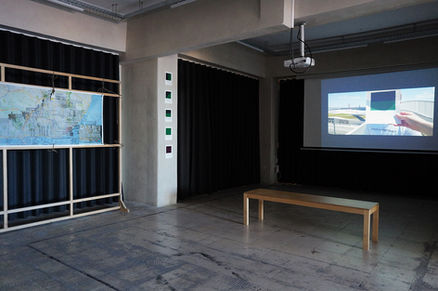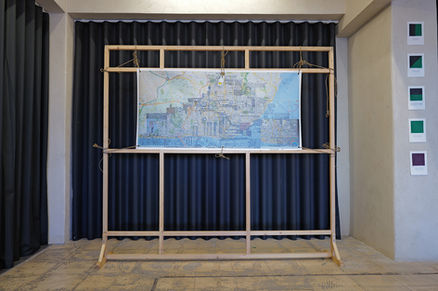Create Your First Project
Start adding your projects to your portfolio. Click on "Manage Projects" to get started
The Living Atlas
How do you map a city without tracing its streets? For us, mapping is not about geography — it’s about perception. It’s about memory, motion, and how public space shapes us. Over the past twenty years, we’ve developed a media-based, research-driven practice that explores the tension between walking, mapping, and storytelling. In Lisbon, our practice unfolded in an evocative new chapter.
Last April, we began by drawing a single line across a map of Lisbon. That line was not arbitrary; it was a conceptual incision, cutting through forty specific points in the city, each tied to a conversation, a memory, or an encounter. From this map, a performative system emerged — a set of color-coded intervention cards, each one carrying fragments of image, text, and score-like instructions. Not rules, but cues. Not directions, but invitations.
These intervention cards form the core of “Minor Modes of Multiple Muted Memories in Motion”, which we recently presented at HANGAR. In our latest activation, we returned to the first eleven points of the Lisbon map, not alone but in collaboration — activating what we call the “green” and “purple” protocols.
The green protocol is the realm of movement, the dancer. For this activation, breaker and fellow resident Timo Paris stepped into the role. His improvisational, physical approach brought new texture to the scores. With each location, he activated energies like diversion, discouragement, deception, and division — not as concepts to be explained, but as gestures to be embodied. A curb becomes a cue; a ledge becomes resistance.
Alongside him moved the purple protocol: the witness. Here, we took on the role typically meant for a digital content creator — recording Timo’s performance with a single tablet. The decision to use low-tech tools was deliberate: presence over polish, responsiveness over production value. The purple cards reflect on types of groups — transitory, recurrent, formal, informal — which shape the atmosphere of each public moment.
Together, these dual protocols transformed the city into a speculative setting. Lisbon’s public spaces became a temporary field for choreographic interaction — both subtle and disruptive. The video that emerged from this process is not a finished artwork but an archive, a beginning. A living atlas. A map not drawn in ink, but in footsteps and gestures.
This activation marked a return to our roots: site-specific performances in the public realm, often unsanctioned, sometimes subversive. Yet working with Timo brought new insights. As a breaker, he revealed how the city welcomes movement differently depending on who performs it. The streets embraced him. Passersby stopped, smiled, filmed. As artists, we noticed how the same spaces that often meet high art with suspicion, responded to street culture with curiosity and warmth.
“Minor Modes of Multiple Muted Memories in Motion” invites us to reconsider how cities are navigated, remembered, and felt. It asks: can a city be scored? Can memory be danced? And who gets to move, and how?







